Leather contains protective natural oils that keep it soft and pliable. Normal wear and tear can remove those oils over time. Therefore regular upkeep on your boots is required to prevent unwanted leather damage, but how often is it necessary? We've researched and found answers for you.
How often you condition your leather boots depends on how frequently you wear them and the conditions they endure. Every 3-4 weeks is typical for work boots worn every day in a harsh environment, while 2-3 times per year is enough for boots not worn very often.
Keep reading to learn more about leather and proper conditioning, including how often and why. We'll also take a look at different types of oils and conditioners.
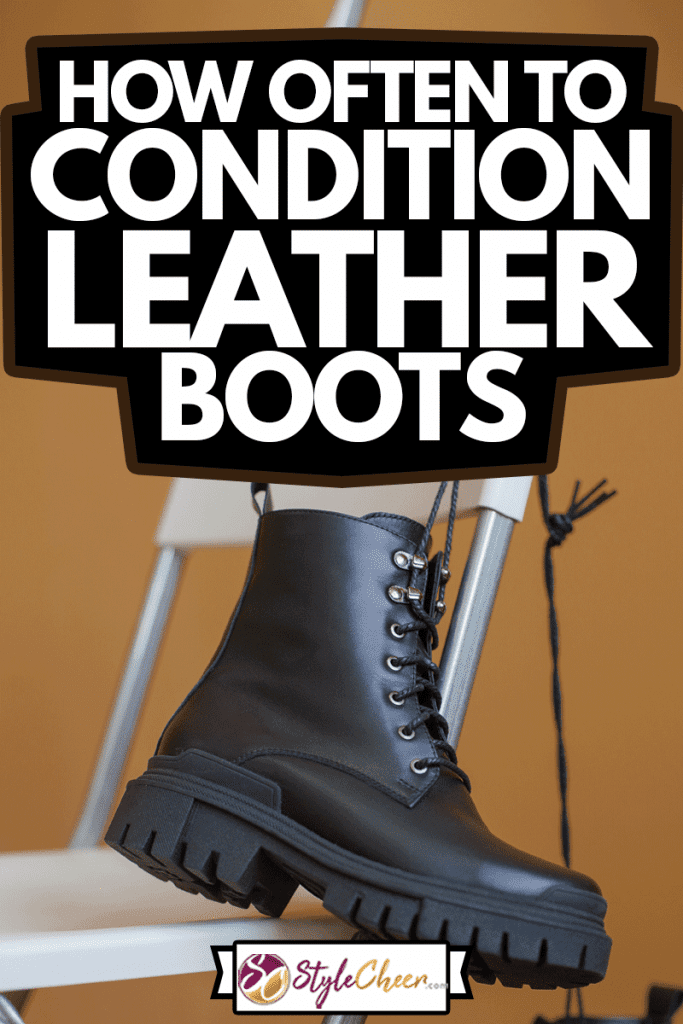
This article may include affiliate links and elements that were carefully created by our team using advanced ai to help you envision the best style advice.
Is leather conditioner necessary?
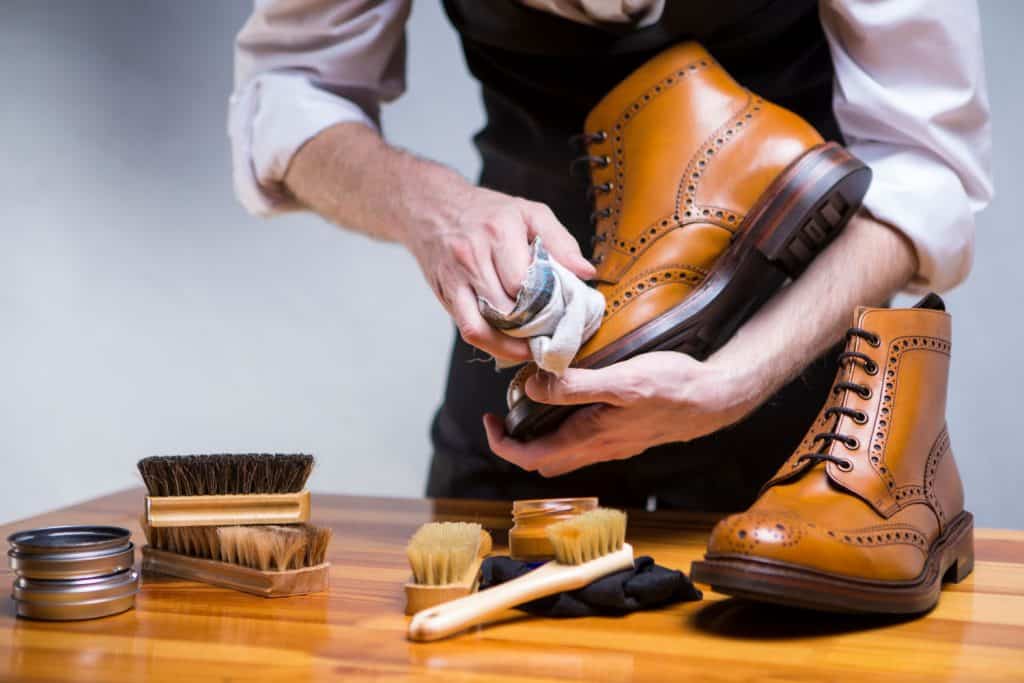
Yes, leather loses its natural oils through friction and exposure to natural elements like sunlight, rain, dirt, and mud. When leather dries out, it will begin to split and crack. Replenishing the oils avoids unrepairable leather damage. Therefore, leather needs to be oiled or conditioned regularly, but you need to know how to do it properly.
Frequency
Leather needs to be oiled or conditioned when the appearance looks dull or dry. The frequency will vary depending on how rough the leather is treated when worn. Leather frequently exposed to rugged conditions may need to be revitalized every 1-3 months, while boots worn mostly inside on occasion may only need to be nourished every few months or even once or twice per year.
Find the right balance for your boots and your lifestyle. Conditioning too often can oversaturate the leather and cause it to decay. However, leather that dries too much will dry rot and disintegrate. You can avoid either scenario by paying attention to your leather.
Cleaning
It's best to clean your leather boots or shoes after each use, especially before applying oil or conditioner. The process might be as simple as wiping them down with a clean, lint-free cloth. If there's mud, clean with a stiff brush to remove as much dirt as possible.
Consider this set of tools from Takava to help with cleaning.
Soaking your leather boots with water to clean is not recommended. However, a sponge or damp cloth with some saddle soap may be necessary at times. Let your boots dry naturally before adding any oils or conditioners.
Conditioning
There are creams, oils, and waxes for leather conditioning. There are advantages and disadvantages to all. If you want to waterproof, then a wax or mink oil might be best. If you don't want the color of your leather affected, then a leather conditioner or specially blended synthetic product might be what you prefer, as most oils darken the leather.
Once you decide on a product and it's been tested on your leather, apply it to the boots. Apply the product in thin layers using a clean cloth. Let the conditioner soak in and wipe off any excess. Then allow time for drying before wearing them again.
Here is a tutorial on cleaning and conditioning different types of leather boots that you might find helpful.
Can you over-condition boots?
Yes, you can have too much of a good thing. When leather is oiled or conditioned too often, it cannot absorb it all, and the hide becomes oversaturated. If you find that your leather has a tacky feel and there are no recent spills or stains, oversaturation is probably the issue. If the excess oil remains, the leather fibers will eventually break down.
Leather conditioner should only be applied when needed. Leather pores can only hold so much before they become clogged. Additional oil begins to pool and destroys the leather fibers with this happens. After cleaning and conditioning your leather, be sure to wipe off any excess oil not absorbed into the leather.
Oversaturated leather can be fixed, but don't wait too long. Wipe off as much surface oil as possible, then clean with an alcohol-based leather cleaner or rubbing alcohol if that's all you have handy. However, if using rubbing alcohol, test first to see if the color will be affected. We want the oils drawn out and the leather to dry out in this situation.
You can also sprinkle baking soda or corn starch on completely dry leather and let it sit for several hours. If you return to find yellowed baking soda, it has extracted excess oils from the leather. Dust it off and repeat if you feel like too much oil remains.
How long does it take boots to dry after conditioning?
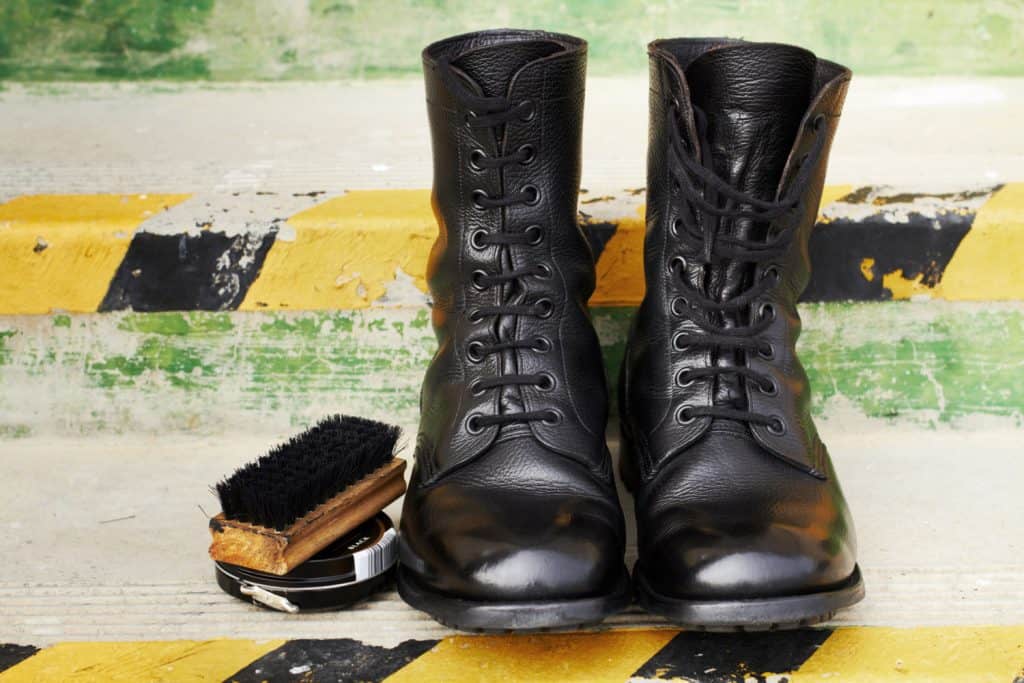
After applying leather oil or conditioner to your boots, let the product dry before use. Most products say a minimum of 15-20 minutes, but several hours are needed for best results. You may find that conditioning your boots at night is best so that they can sit undisturbed overnight before wearing them again.
Which oils are best for conditioning leather boots?
There are many oils available for conditioning leather boots. Mink oil and neatsfoot are two of the most common natural oils. There's also lanolin and beeswax. These oils have been used for many years, so reputation says a lot.
Also available are leather oils and leather conditioners. These products combine oils and additives to boost performance.
There are also household products such as coconut oil, Vaseline, baby oil, and mineral oil that work on leather. While these products are not the best options, occasional use is better than not treating your leather when these products are all you have available.
When choosing a leather oil or conditioner, consider the type of leather. Some products pair better with certain leather types and finishes.
How long do leather boots last?
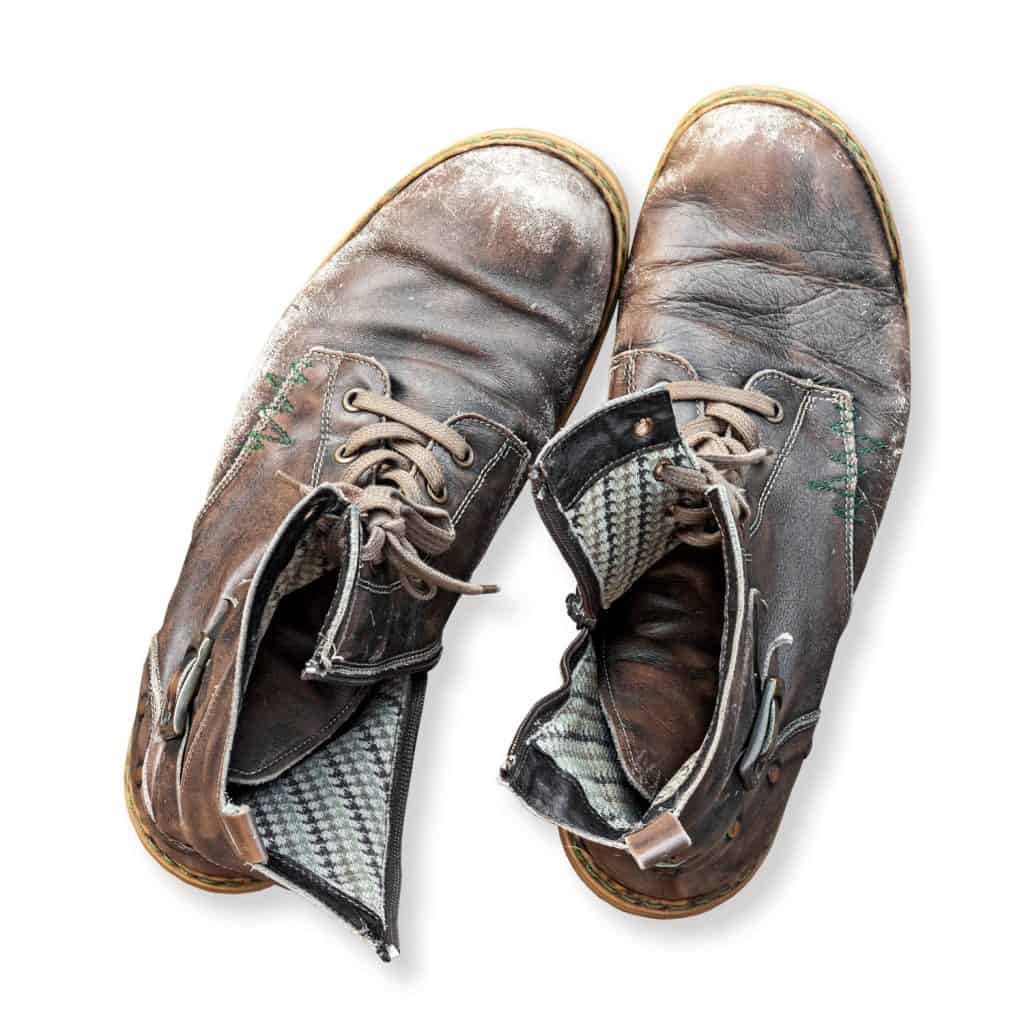
Leather has been used for clothing and apparel for centuries because of its durability. Top-grade full-grain leather can last over 100 years, so it can last a lifetime if you properly care for it.
The life of leather boots depends on many factors, such as the quality of the leather, the environment it endures, and how well it is maintained.
Quality
Leather has four basic grades: full-grain, top-grain, genuine leather, and bonded. Full-grain leather is the best quality leather you can get, and some say it even gets better with age. The leather quality diminishes slightly with each grade ending with bonded leather which is leather scrap mixed with other fibers glued together to form a textile material.
High-quality leather will last for many years, while lower-quality leathers and faux leathers will deteriorate quickly under harsh conditions.
Environment
Leather is durable, but natural enemies can destroy it over time. Here are a few things that might damage your leather without your knowledge. While you can't avoid contact with most items on this list, knowing allows you to limit unnecessary contact and care for your leather afterward.
Sweat and body oils
Of course, our bodies touch our leather apparel, and there's no way to avoid it. However, our perspiration's water, salt, urea, sugars, and ammonia break down leather's finish and fibers.
While this article focuses on replacing the lost oils from leather, one type that is not good for leather is human body oils. Besides the stains that human body oils leave on leather, the chemical reactions due to ph levels between human body oils and leather are destructive.
Sunlight and Heat
We all know that our skin needs protection from the sun. Leather does too. So if you wear leather boots outside most days, the sun's UV rays are doing damage. First, it fades the color, but it also dries and degrades the fibers.
Heat causes leather to expand, widening the pores. For this reason, some people apply direct heat on their leather before conditioning, believing it allows more oil to be absorbed. However, done too often, the heat may do more damage than the added oil can undo.
Water
It seems odd that water dries out leather, but it's true. Water molecules bind to the leather's natural oils, so when the water evaporates, the oils leave too. Notice when your boots dry if the appearance is different. If so, this is a sign to condition them to replace the lost oils.
Humidity in the air can also be a problem. Leather pores absorb the moisture in the air. If humidity levels are normal, this isn't a problem. It helps keep the leather moisturized. However, if you live in a humid climate, the leather may absorb too much humidity, leading to mold and mildew.
Sudden and extreme temperature changes
Leather expands when it warms and contracts when it becomes cold. Nourished leather contains plenty of moisture and can adapt to the changes because it's soft and flexible. If dry and brittle, these fluctuations cause the leather to wrinkle and crack.
Dirt and Dust
You wouldn't take sandpaper to your leather boots. Leaving dirt and dust particle on your leather is not much different. The tiny particles grind against the finish wearing it down, leaving the leather's pores exposed and vulnerable.
Chemicals
Chemicals, even those in leather conditioners, destroy leather fibers over time. While occasional use is necessary, the more natural the product, the gentler it is on your leather. Avoid chemicals when possible to make your leather last longer.
Maintenance
Another major enemy of leather is neglect. When you don't properly care for your leather, you can expect damage like peeling, cracking, fading, and even dry rot. Spend a little time and effort cleaning and conditioning your leather boots, and you might be surprised how much better they look and how long they last.
Conclusion
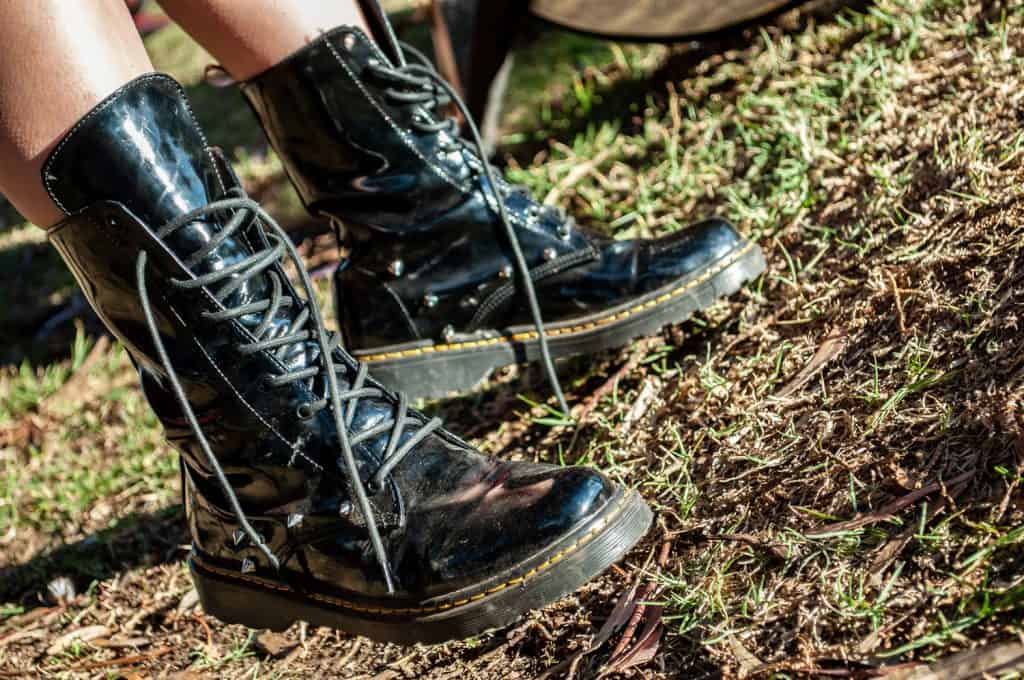
Leather needs to be cleaned and conditioned, but choose the product and set the schedule based on your boot's needs.
To learn more about care for your other leather apparel read, "How to Clean a Leather Handbag."
Also, consider reading, "Can You Use Lexol On Leather Jackets?"


![Woman washing a shirt with her hand, Remove Tire Marks From Clothes Like a Pro [How to Guide] - 1600x900](https://stylecheer.com/wp-content/uploads/2023/08/shutterstock_305739509-300x169.jpg)

